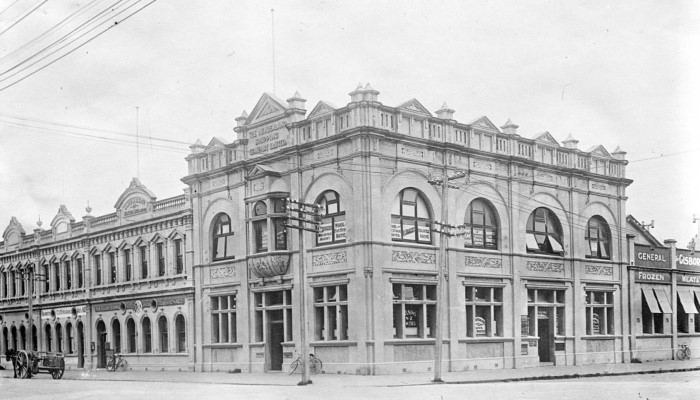Places of the East Coast
Gisborne District Council is divided into the East Coast and Poverty Bay. Gisborne, Te Araroa, Ruatoria, and Waikohu are some of the historic towns in this region. The Hangaroa River, Waiapu River, Waipāoa River, and Ūawa River flow through this region.

Image: New Zealand Shipping Company offices, Gisborne by Auckland Libraries Heritage Collections 1643-10497.
Which places can I learn about?
Here are some places in the East Coast you could find out about:

Gisborne
Known as Tūranga. The Tūranganui River runs through Gisborne. Early Māori called the Gisborne region Tūranganui-a-Kiwa.

Matawhero Church
Built around 1865 as a schoolroom for European settlers. Left standing after Te Kooti raided Matawhero and Makaraka.

Mount Hikurangi
Highest peak in the Raukūmara Range. Said to be the first place to emerge when Māui fished up the North Island.

Puhi Kai Iti | Cook Landing National Historic Reserve
Commemorates the arrival of the Horouta and Te Ikaroa-a-Rauru waka and the first landing place of James Cook in Aotearoa New Zealand.

Te Poho o Rāwiri Marae
First marae built in Gisborne in 1852. It was named after Rāwiri Te Eke Tu-o-te-Rangi of Ngāti Oneone, a signatory to Te Tirīti o Waitangi.

Waiapu River
Formed by the joining of the Mata River and the Tapuaeroa River. The river is of spiritual significance to Ngāti Porou.
Tips: These are just some examples of places you could research. You may have somewhere different you're interested in finding out about. Just use the place name as your search terms in the resources below.
East Coast resources
Regional websites from museums and councils are some of the best places to look for information about historic places in the region and changes planned in that area.
Te Runanga o Turanganui a Kiwa
Te Runanga represents the interests and growth of Rongowhakata, Ngāi Tāmanuhiri, and Te Aitanga a Māhaki iwi.
Visit the links on The People (Nga Iwi) and The Land (Nga Whenua) to read the story of Mahaki, Rongowhakaata, and Ngai Tamanuhiri iwi and their connection to the land.
Tips: Some websites have .au, .nz, .uk or other codes in their url. This can tell you which country this website comes from eg .au is from Australia or .nz is from New Zealand. You can check the About Us link on the website for more information.
Tupapa: Our Stand. Our Story
Tupapa is a bilingual website, rich with stories about the first people who navigated from Polynesia to Aotearoa, their arrival here, early life in Turanganui-a-Kiwa (Gisborne), and their first encounters with the explorer James Cook.
Go to Stories.
Read the story Arrival in Aotearoa to understand where the waka Horouta, Takitimu, and Te Ikaroa-a-Rauru landed in Turanganui-a-Kiwa.
The story Adapting to the Land has a map of how the land and bay may have looked at the time when the ancestors arrived.
Use the story Encounters with Cook to check out mapped areas of each of the 3 landings made by Captain Cook and his crew from the Endeavour.
Tips: Some websites have .au, .nz, .uk or other codes in their url. This can tell you which country this website comes from eg .au is from Australia or .nz is from New Zealand.
Tairawhiti Museum
The museum is the centre for arts, culture and heritage activities in the Te Tairāwhiti region.
Look under the About us tab to find a link to the Museum History page. It has a timeline of events including the opening of the Wyllie Cottage built in 1872.
The tab Visit has a map with details on how to get to the museum and its opening hours.
Tairawhiti Museum Online Collection
The museum is at the centre of the promotion of arts, culture, and heritage activities in the Te Tairāwhiti region. Their online collection has archives, photographs, art, taonga Māori, natural and social history objects.
You can search the collection using names of people or groups of people.
Choose an object to take a closer look.
Maunga Hikurangi
Maunga Hikurangi is the sacred mountain of Ngāti Porou iwi. Use this website to find useful cultural stories about the maunga (mountain) and its significance.
Go to the tab called Blog.
Find the section on Legends of the East Cape.
Read the New Zealand creation story, Te Ika-a-Māui, and the legend of Paikea.
General New Zealand resources
Use these websites to find information about important places, cities, monuments, landmarks, marae, and natural features such as rivers and mountains in the East Coast region.
Te Ara The Encyclopedia of New Zealand
Te Ara is an excellent starting point for all questions about Aotearoa New Zealand. If we look down to the bottom of the page, we can see that the website belongs to the Ministry for Culture & Heritage, so the information is well-researched and reliable.
Go to Stories A-Z.
Go to East Coast places to find towns, valleys and bays on the East Coast.
Go to East Coast region to find out about the history and more of the region.
Enter 'canoes East Coast' into the search bar to find the article Canoes of the East Coast.
This talks about the landings of the Nuku-tai-memeha,Tākitimu, Horouta and the Nukutere canoe.
Tips: There are many ways to find information on a website. You can choose to navigate from a menu or a tab to find a page of related information, or you can enter search words in the search bar.
NZ History
NZ History is another website from the Ministry of Culture & Heritage with information about people, places and events in the history of Aotearoa New Zealand.
Go to Places to find East Coast. Then select a town, lake or place to learn about its significance.
Also, go to Culture and Society to find the Memorials Register to view the East Coast memorials map.
This page has links to memorials built for people from the region who fought in the New Zealand wars, the South African War, and the World Wars.
Tips: Many web pages have links to further information or to other recommended sites. Following these links is a great way to find out more.
Department of Conservation
The Department of Conservation (DOC for short) is the government website about preserving the natural and historical sites of New Zealand.
Go to Our work, then select Heritage to find a link to Explore heritage sites by region.
Then select East Coast.
Explore one of the historic sites.
Or, search for 'Gisborne area' to bring up results like Otoko Walkway and Te Kuri Farm Walkway.
Each of these locations has a History and culture section that covers Māori settlement, how settlers transformed the area, and the beginning of economic activity in the area.
Tips: We like sites that are from government or other reputable organisations, because we can trust the information. You can sometimes tell these sites by their web address – they might have .govt or .edu in their address – or by looking at their About us pages.
DigitalNZ
This is a search site that focuses on Aotearoa New Zealand's history and brings together results from lots of different websites such as New Zealand libraries, museums, universities, and government sites all at once.
Search using the name of a place.
Look at a range of videos, audio, articles and images, and more about your topic.
Ngā Taonga Sound and Vision
Funded by the Ministry for Culture and Heritage, Ngā Taonga Sound & Vision is New Zealand’s audio-visual archive. Their collection includes film and television, radio and sound recordings, props, posters, and more from over 120 years of New Zealand’s history.
Use the name of a place as a keyword to search the collection eg Tokomaru bay.
In the Filters, make sure you select View or listen online now.
Choose something to watch or listen to.
Tips: You may see a message about cookies on this website. Cookies are a kind of data collector that is used by some websites to collect information about their users.
Rārangi Kōrero | New Zealand Heritage List
This is part of the Heritage New Zealand website. It is a record of place-based heritage in New Zealand.
To browse places, under Region select Gisborne Region.
Then select the Show listings button to see all the places.
You also have the option to use filters to search by keywords, list types or show listings.
For example, you can search for the Gladstone Road Historic Area. You will find an image of the area, and a story of how development and trade took place in Poverty Bay in the 1870s.
Tips: Websites that have .org or .net in the address can have good information, but you need to assess how reliable it is. Check the About us link on the website, if you can find one. That can tell you what the organisation’s mission and values are.
New Zealand Gazetteer
This is a tool on the Toitū Te Whenua | Land Information New Zealand website where you can search for place names in New Zealand. Some places will tell you where the name came from, or other names a place may have had.
Enter a place name into the search bar.
Names in bold are an official place name.
Look in the Details section for history or meaning of the name.
Māori maps
Marae are a significant part of Māori identity. Māori maps help Māori connect with their tribal marae and ancestry in Aotearoa New Zealand.
Next to the search box, use the menu to choose Region.
Then search using 'Gisborne region'.
Read about Muriwai Pā (Te Poho o Tāmanuhiri) and Manutuku marae.
Look under Key Information to find details about the marae's whare, iwi, hapū, waka, and maunga.
Tips: Websites that have .com or .co in the address can have good information, but you need to assess how reliable it is. Check the About us link on the website, if you can find one. That can tell you what the company’s mission and values are.
Museum of New Zealand | Te Papa Tongarewa
New Zealand's national museum located in Wellington has an online collection that covers Taonga Māori, Aotearoa New Zealand history, and Pacific cultures.
Enter a place name in the search box.
You can get fewer results by using filters eg Type and Collection.
Use the filters on the left to narrow your results according to your research needs.
Maritime New Zealand
Maritime NZ is the government agency responsible for the safety, security, and environmental protection of coastal and inland waterways. It has information about the East Cape Lighthouse.
Go to Public info.
From Lighthouses of New Zealand choose East Cape.
Look down the page for The history of this lighthouse.
Books
Look for books about the East Coast in your school library or local library. Your local librarian and elders in the community such as grandparents or kaumatua (elders in Māori society) would be the best people to help you with your research about your local history.
Here are a few titles to help you begin your search:
Blue sky highway: the East Cape of New Zealand by Gray Clapham
Cyclone Bola: Gisborne, 1988 by Kath Beattie
Under the sun: Gisborne, New Zealand by Gray Clapham
Māori tribes of New Zealand by New Zealand. Ministry for Culture and Heritage
Meeting-houses of the Ngāti Porou area of Te Tai Rāwhiti: an illustrated guide by David Simmons
SCIS no: 5496189
More about the East Coast

People of the East Coast
This section will help you get familiar with iwi, hapū, groups of people, and well-known names in politics, sport, and entertainment from this rohe (region).
Learn about people of the East Coast
Events of the East Coast
Māori lived on the East Coast for a long time before the arrival of European settlers, traders, whalers, and missionaries. The region is well known for the achievements of the demigod Māui-tikitiki-a-Taranga.
Learn about events of the East Coast
